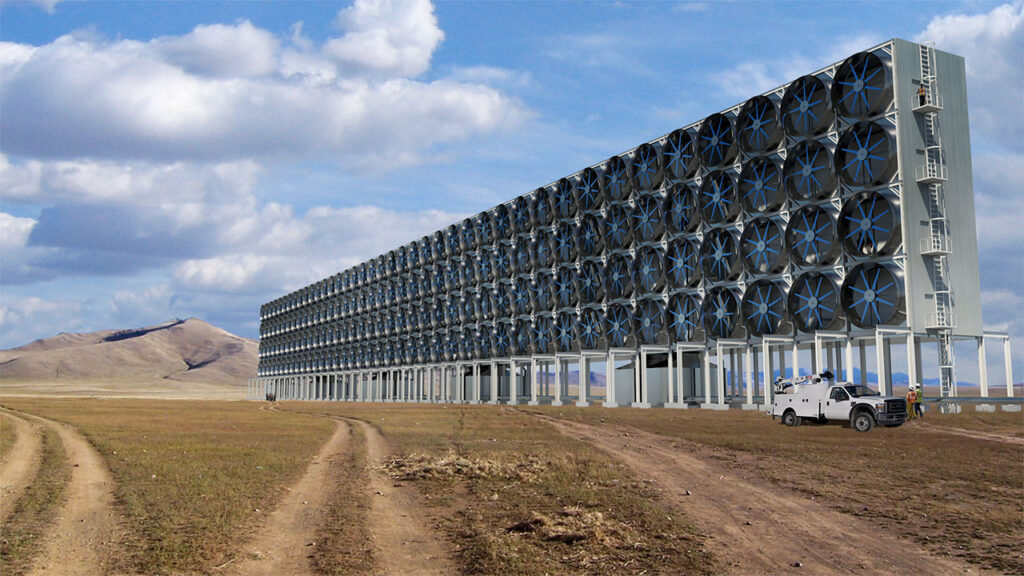Innovations in Climate Control: Exploring Direct Air Capture (DAC) Systems

Climate change is one of the most pressing challenges facing our planet today. As carbon emissions continue to rise, innovative solutions are needed to mitigate their impact. Direct Air Capture (DAC) systems have emerged as an advanced technology with the potential to revolutionize the fight against climate change.
In this article, we will delve into DAC systems, exploring their mechanisms, benefits, challenges, and role in shaping a more sustainable future.
What is a Direct Air Capture (DAC) System?
Direct Air Capture (DAC) is a technology that directly removes carbon dioxide from the atmosphere. While traditional strategies in carbon reduction predominantly revolve around curbing the release of emissions, DAC systems work to extract CO2 that is already present in the air actively. This unique approach has garnered attention due to its potential to help achieve harmful emissions – a critical factor in stabilizing global temperatures.
The distinctive quality of this approach lies in its capacity to facilitate “negative emissions,” a crucial concept in climate stability. The Earth’s atmosphere currently holds excessive carbon dioxide, intensifying the greenhouse effect and elevating global temperatures. The efficacy of Direct Air Capture in directly extracting carbon addresses this imbalance, offering a solution to restore the balance of atmospheric carbon and the global temperature. Harmful emissions become attainable by removing more carbon than is emitted, resulting in a gradual decline in atmospheric carbon levels and mitigating the present-day climatic repercussions.
How Do DAC Systems Work?
Direct Air Capture (DAC) systems employ advanced technology and scientific principles to tackle the issue of atmospheric carbon and its effects on the global climate. The process starts with large fans strategically pulling significant amounts of surrounding air from the atmosphere. This air, containing various gases, including carbon, is directed into the DAC system. The air undergoes treatment within this system using a highly specialized chemical solution. As the chemical solution interacts with the incoming air, it triggers a chemical reaction that effectively separates the carbon molecules from the rest of the air.
The isolated carbon molecules then undergo a separation procedure, resulting in concentrated carbon that can be collected efficiently for later utilization or storage. The versatility of the captured carbon opens up a range of possibilities for its practical applications, contributing to a more sustainable method of managing carbon.
A notable application of captured carbon involves geological storage, wherein the carbon is securely stored underground, preventing its release into the atmosphere. This action directly aids in reducing concentrations of greenhouse gases. This approach aligns with the broader carbon capture and storage (CCS) strategy, which strives to mitigate the environmental impact of carbon emissions.
Benefits of DAC Systems
DAC systems offer many benefits in the fight against climate change:
- Carbon Removal: DAC systems contribute to the active removal of carbon from the atmosphere, addressing the existing carbon imbalance and helping to restore a healthier environment.
- Harmful Emissions: By achieving harmful emissions, DAC systems have the potential to compensate for hard-to-reduce emissions in sectors like aviation and heavy industry.
- Climate Goal Support: DAC can complement existing carbon reduction efforts and support the goals of the Paris Agreement by aiding in the transition to a low-carbon world.
- Flexibility and Scalability: DAC facilities can be built almost anywhere, providing flexibility in deployment. This scalability is crucial for addressing emissions from a variety of sources.
Challenges in Implementing DAC Systems
While the promise of DAC systems is undeniable, several challenges must be addressed before widespread implementation:
- Energy Requirements: The process of capturing carbon demands energy, and the source of this energy dramatically impacts the overall carbon footprint of DAC systems. Finding renewable energy sources or optimizing energy usage is essential.
- Economic Viability: As with any emerging technology, cost remains a significant barrier. Research is ongoing to make DAC systems cost-effective through technological advancements and economies of scale.
- Carbon Utilization: Finding valuable uses for captured carbon is essential for the economic feasibility of DAC systems. Developing efficient carbon utilization methods will be crucial.
- Public Acceptance: Raising awareness about DAC systems and addressing potential concerns is vital to gaining public support for their deployment.
Integration and Future Prospects
Direct Air Capture (DAC) systems have the potential to be integrated across various industries, from agriculture to energy production. These systems also show promise in aiding the development of carbon-neutral synthetic fuels and enhancing carbon storage in concrete structures. Notably, international collaborations are emerging to speed up the progress and deployment of DAC technology.
Looking ahead, DAC systems serve as a beacon of hope in the ongoing fight against climate change. As these technologies advance and become more cost-effective, they could be crucial in achieving the global goal of reaching net-zero emissions. To make this potential a reality, governments, industries, and individuals must come together to support and invest in these innovative solutions. Doing so can collectively redirect the course away from a climate crisis and forge a sustainable future for generations.
